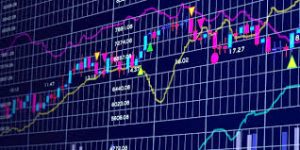Nowadays any trader or an investor can turn their rules into a trading system that will let computers monitor and execute their trades for them. At the very least, this feature is attractive to many due to the fact that it removes emotions from decision making. If you decide to use it, your strategies will only depend on criteria you have set. However, is it right for you?
What is an Automated Trading System?
These systems, that many call mechanical trading systems or simply algorithmic trading allow you to establish rules. Once you program these trade entry and trade exit rules, the system will carry them out automatically. You can base the rules on pretty much anything, depending on the system. The rules can be as simple as setting thresholds for trading, or extremely complicated. These systems require a connection with a direct access broker. The rules also have to be written in the proprietary language of the platform you are using.
And the platform you are using will determine your capabilities regarding the use of algorithmic trading. Some even have strategy “wizards” which will let you use lists to set your rules. These are lists of technical indicators most commonly put to use in trading. The most common use, of course, uses setting the moving averages as triggers for entry points. Of course, you can input various types of orders and situations when the trade starts. And yes, you can always just use the default inputs of the platform. Even if that is not something we would recommend.
In order to make a really good mechanical trading system, you will require quite a bit of programming knowledge. Or, close cooperating with a programmer. However, working with a programmer has certain advantages over using the wizard the platform offers instead. While it is not as simple, it is a lot more flexible and, ultimately, more rewarding.
Of course, the useful thing is that the computer will monitor the markets effectively. And it can take the opportunities you might miss, as long as they are in your specifications. And, you can set every little detail up accordingly. Once the system enters a trade for you, it is time for stop losses, trailing stops and targets to come into play. Of course, these will generate automatically based on your specifications. If you are joining a rapidly moving market, this type of orders is really handy. The instantaneous action on it can make a difference from catastrophic losses or minor issues.
Pros
The list of pros for monitoring the market via a computer is really long, and it includes a lot of different factors.
- It can minimize the effect of emotions. If you plan on being a serious trader, you need to have a plan. However, a lot of traders fail when they follow their impulses and buy/sell depending on their emotions. This will help both extreme types of traders. The shy ones, who are afraid to get in a trade, will not have to worry about this. And the overzealous ones, who can’t stop trading will be slowed down by the automated systems.

- Backtesting. The ability to backtest means that you will be able to apply your rules and programs to the market data of previous years. With this, you can check how well you would have done with those rules in said markets. The computer is not capable of playing guessing games. Your rules have to be absolutely clear and precise. And you cannot really be sure they are perfect without running some tests. With backtesting, you can evaluate your programming and finely tune it for optimal results.
- Ride out the volatile market. Sometimes markets fluctuate heavily. And those times usually test the discipline of traders. Many will get scared and miss out on their profits. However, you should be able to set the rules to avoid losses during price fluctuations. Not to mention that you won’t make accidental purchases while under a lot of stress.
- The entry speed. You are never going to be as fast as your computer. And generating a complete order with a full set of rules and stop orders in an instant is really useful. Not many a thing can demoralize you more than missing out on a huge profit just because you couldn’t enter an order quickly enough.
Cons
There are, of course, some disadvantages when it comes to automatic trading. And you should definitely be aware of them.
- Potential failures. In theory, mechanical trading is almost perfect. You set the program up and it just trades away, earning you a profit. However, it is not really infallible. Your Internet connection might break, and that could lead to you losing out on trades.

- It still requires monitoring. Although, in theory, you can just let it trade, you still have to monitor the systems. If you do not, you are putting yourself at risk of not noticing potential errors. Whether they are mechanical failures, delays, or duplicate orders.
- Looking good on paper. Some plans look perfect with historic data but don’t really work on the live market. Something you should keep in mind when using mechanical trading systems.

One comment
I can’t imagine too many people are making money with automated systems